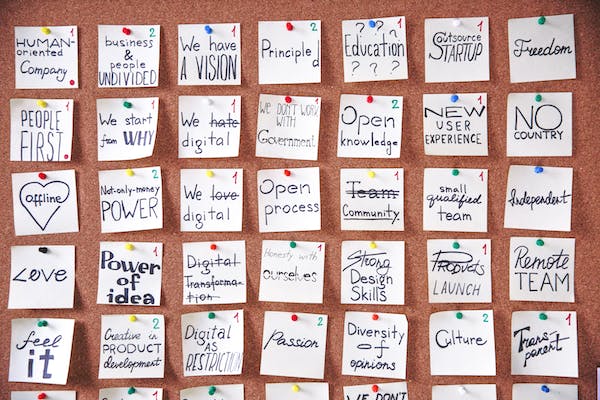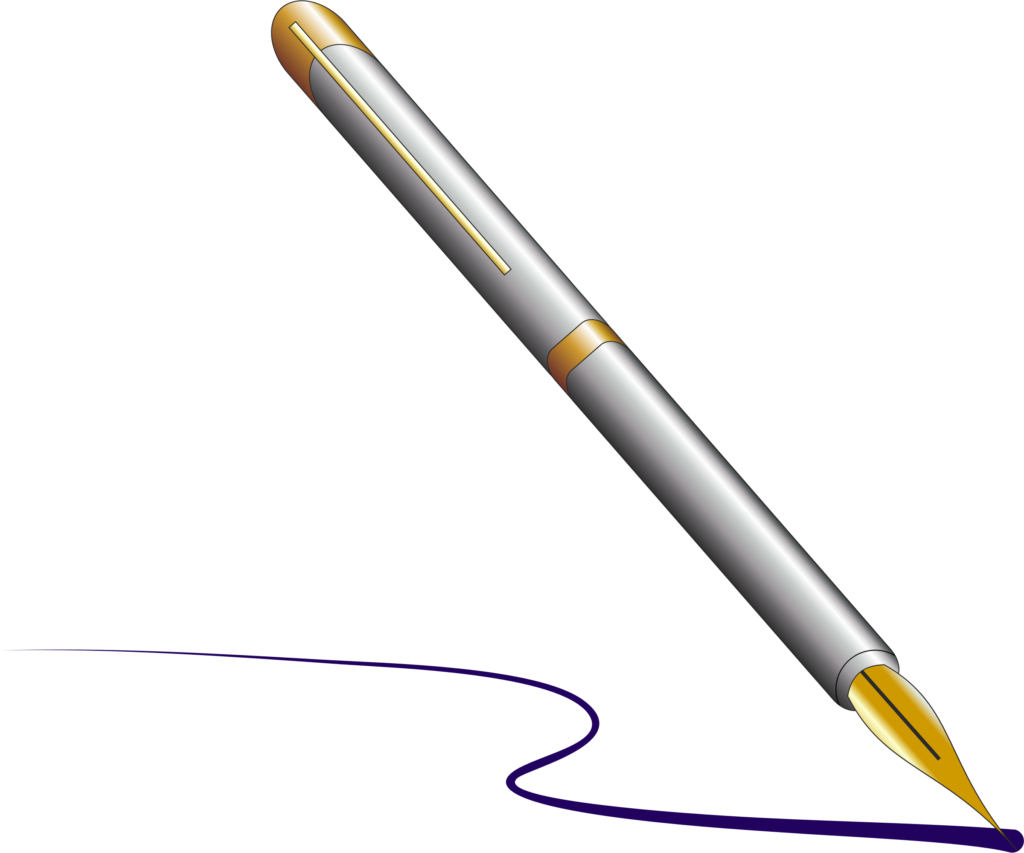What to do with a Brain Dump?

Paper is to write things down that we need to remember.
Our brains are used to think.
-Albert Einstein
As phases go ‘brain dump’ is vaguely scatological and just plain vague. The advice about what to do with your brain dump is often just as vague, though usually with the equally vague promise of it being useful and helping you do more things and do better and doing those things.
But it’s really just a list.
Just a stream of consciousness list of things in your head. Write down everything you’re supposed to, everything you want to do, and everything you’ve thought about doing.
It doesn’t matter where you write it down. On a phone. A tablet. A computer. A text document. A notebook or a notepad. (I advise against the use of napkins. That rarely ends well.)
Productivity, organizationally inclined, and planner people talk about this particular kind of list a lot: as a starting point, a reset, or for a good brain cleaning.
We’re going to get very granular about how to use them.
There are two kinds of brain dump lists: general and specific.
A general brain dump is literally everything in your head. Every task. Every idea. Every note, observation, what if, may have been, thing you want to search for and look up, article, project, chore, obligation, event, etc that is crowding your thoughts put down on paper as fast as you can write it. (Stream of consciousness, remember? Don’t try to order it or group it. Just write it!)
Hold nothing back. If it’s in your mind, write it down!
A specific brain dump is to brainstorm a project/big task/group of tasks and everything you write down is related to or about that thing. It’s still stream of consciousness. It’s still written rapidly. It’s still in no particular order, but it is a good starting point in and of itself. Usually, it’s a jump start or written right after a false start.
Some people may use a mind map or other visual diagram method, but the principle is still the same: putting everything for the task or project from your head onto the page. While mind-mapping isn’t the best tool for me (yet), it might be for you, and the same concepts apply. It’s great brainstorming for your task or project.
(I would advise against mind mapping the broader, general list. It can get very messy and confusing very fast.)
It Can Be Counterproductive
Brain dumps can also really stressful. (They’re not always stressful and can be quite helpful, but those kinds of lists are in the upper percentile for things can cause anxiety if you’re not prepared for them.)
Getting organized, clearing your head, refocusing – whatever reason you have for dumping everything in your brain on to a piece of paper (or a screen), you’re suddenly made starkly and painfully aware of all the things you haven’t done yet.
Deadlines flash through your head, you get distracted by things you absolutely have to do or really, really want to do. You realize how many things you’ve put off doing, and you can get overwhelmed by the sheer number of things you have to do and want to do.
You go from getting organized or clearing your head to thinking about working on a thousand things at once, and the uncomfortable awareness that you probably don’t have enough time or energy to do them all.
(If this is you, there are methods that can help!)
What Does It Even Do?
When I describe it like that, a brain dump doesn’t sound very useful, does it?
But I can prove they are really quite useful! (Possibly even in this article about brain dumps, but there’s no telling right? By the end of this, I might even convince myself brain dumps are a bad idea. Thinking too much about how things work can be a dangerous thing.)
Like a lot of (so called) productivity tools (or hacks), a brain dump is best used in the right context, under the right circumstances.
Clearing clutter out of your gray matter is never a bad thing, but if you just amass a collection of brain dump lists and have no other organizational tools and never get anything else done, all you’re doing is moving tasks from brain to paper and not really doing much to fix the problem that created the cognitive clutter.
Not such a great plan, speaking in the long-term.
So. Let’s talk. When is a brain dump list actually going to help us?
Gotta Focus. Or Else!
This is the most common use of the brain dump list.
You have to get something done. But your mind is full of all the other things you should be doing or want to be doing.
You have to clear the mental clutter – thus, a general brain dump. Sweep the clutter from brain to page, get your focus back and get to work. You’re just externalizing all of the things you’re keeping in your head so you don’t forget them.
This works best when what you’re working on is a higher priority than anything you put down on your list. Because you’re going to write down those higher priority items, and you’re going to think about the things you’re writing down, and that can lead to a most dangerous thing: epiphany!
You might realize you have no focus because you’re working on the wrong thing. Or remember something more urgent or more important. You might figure out there’s some proper prior planning and preparation you need to do before you get started.
(If you’re me, you’ll realize you have about a dozen minor tasks that should get done real quick so you can focus your full attention on the project, so I’m going to use my dubious authority as a blogger to say doing that is a valid, legitimate decision.)
Or, like a couple of my students, you might figure out you’ve already done a huge amount of work already and just need (deserve) a break for a bit. Needing a recharge is a valid reason to have no focus. (I’m a blogger, and I said so. It must be true!)
And it might just give you the cognitive bandwidth to focus on what you want or need to focus on. Any which way, the brain dump list has helped you get moving.
Organizational Dumpster Fires and Other Hot Messes
We don’t like to talk about it, especially in polite company and on social media (which is definitely not polite company.) But sometimes, even the best of us get disorganized. We lose track of things. We get bogged down, forgetful, or even downright apathetic or lethargic about what we should be doing.
There are times when circumstances conspire, events outpace us, needs arise, and our carefully curated processes and systems fall apart, because there are sometimes where no one can keep things going without something having to give way.
And as rude as it may be, we also know (or are) one of those folks who never managed to get it together in the first place, and our lives are just an avalanche of uncoordinated chaos that never quite gets untangled or put to rights.
That’s okay. All of it okay. In fact, all of that is perfectly normal and is nothing to feel bad or embarrassed about and it’s certainly not a failure – even of the personal kind. No matter how loudly you may think otherwise.
(Yes, yes. I know. There are people who just don’t care and don’t try, but why would any of those people be reading my blog? The folk content to let their world burn around them in a dizzying miasma of clutter and chaos probably have no interest in my ramblings about sorting things out and being a meticulous, organized human.)
When you’re trying to reorganize, get back on track, and figure out where you stand in the clutter, a general brain dump is a great place to start.
Collect. Collate. Curate.
This kind of brain dump is where you deep dive your own life and start from the beginning.
Sit down and write it out. Stream of consciousness.
Don’t sort as you go, because you’ll be resorting it later. Probably more than once. But if you just can’t resist, I get it. I’m awful at following directions, too, and I can’t resist trying or organize anything and everything, even when I really shouldn’t. (Probably a flaw, but I’m not fully ready to admit that yet.)
Keep writing things down until you just can’t think anymore and your brain is tired. (Or ten minutes – whichever happens first.) Then get up and go do something else for a while. I suggest eating, drinking, talking to another person, or just watching TV.
Resist the urge to get started doing thing on your list. (Unless, of course, you found something that is a red alert emergency if you don’t get it done now. Go do those things as soon as you can.)
You’ll (probably) really want to start doing the (non emergency) things on your list. In fact, the more seriously you’re taking your process, the more you’ll want to get started. But don’t. You’ll get distracted by doing things and get stuck with only a tiny part of your reorganization done.
It’s worth doing things right, and that means (as always) proper prior planning and preparation.
The list is the first step in proper prior planning.
Once you’ve had a break and recharge a bit, your mind will start churning out more tasks. Probably slowly, but they will be there. If you’re feeling especially brave, cue your memory and walk around your space. Shuffle through papers. Flip through emails. Check your messages on your phone.
This will start to spark memories of things you’ve agreed to do, been asked to, avoided doing, and been pretending didn’t exist.
The list will grow and grow and grow. That’s what it’s supposed to do, because this is when you’re trying to figure out everything you need, want, and should be doing.
The next steps are a lot, and should be their own (series of) posts, but in general: sort into categories, projects, and priorities and set yourself up a plan to start whittling away at it.
This also applies to projects, but for projects, you want a more focused, specific brain dump.
I Have No Idea What I’m Doing
I hate those moments.
I sit down to do something, and I realize I don’t know where to start or how to go about getting it done. Sometimes, there’s a skill or bit of info I lack, but usually it’s just needing to a clearer focus and more specific idea of what’s next.
That’s where the specific brain dump list is helpful. Like I said – some people mind map this sort of thing, but that doesn’t work for everyone. I prefer lists.
Write out all your ideas for the project or task. Write out everything you know you need to do. Be as granular as you can be, so that even the minute steps appear – you never know when forgetting something simple can tangle you up. Write down possibilities, goals, potential end results. Whatever you need to write to get yourself doing instead of thinking (and stressing.)
I often find I haven’t done enough prep or planning, but other times, I find out I just don’t know what I don’t know, and my list is half research. (Or more. Sometimes, a lot more.)
List in hand, you can then sort it, prioritize it, organize it, and use it.


